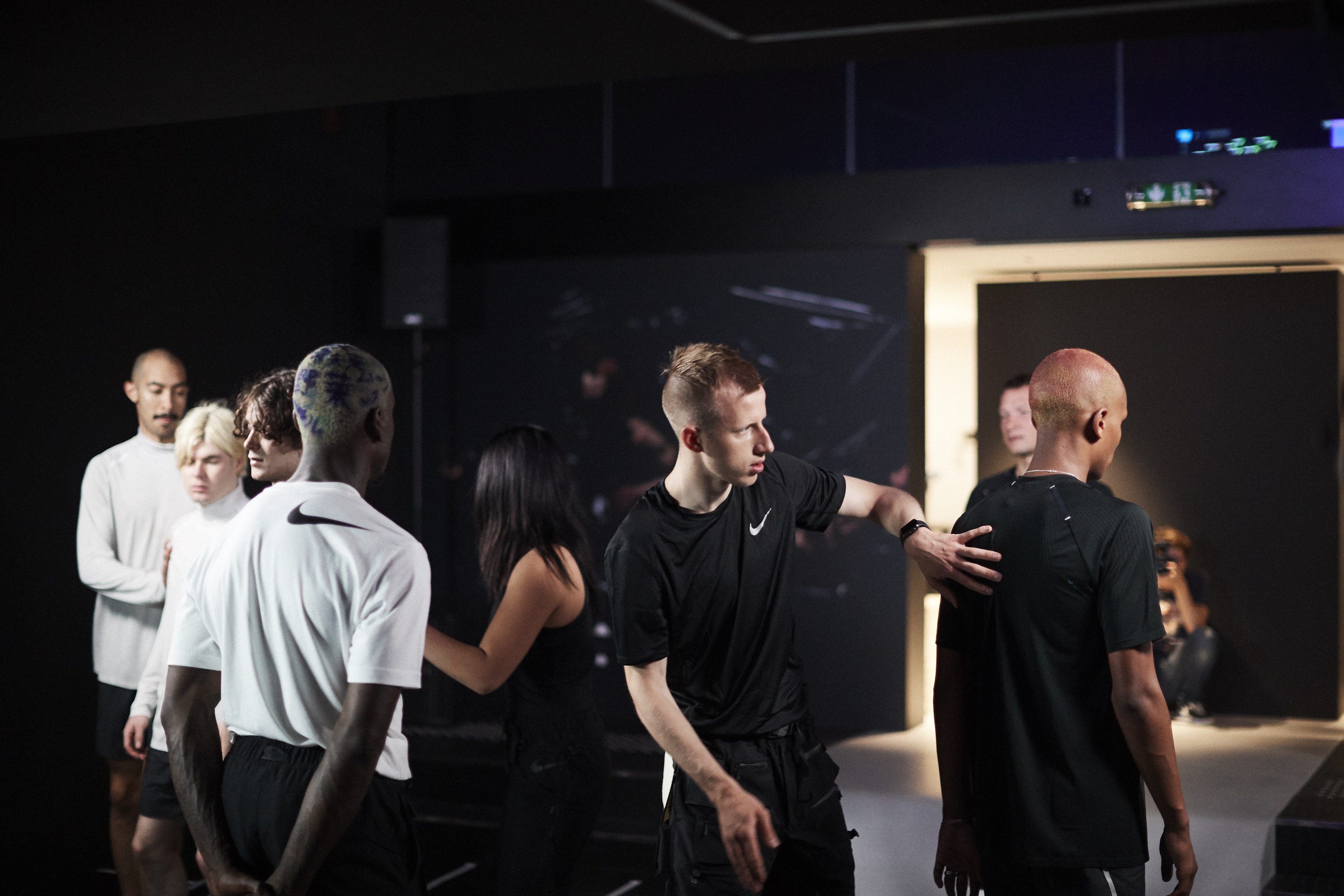NIKE / Cross-Contextual Confluence / Case Study
In June 2018 we conducted a series of sessions on cross-contextual confluence in collaboration with Nike x Matthew Williams, sound artist NSDOS, creative studio Theoriz and Maqs Productions. The objective of these sessions was to activate cross-contextual confluence among the participants on the physical, cognitive and social levels. Our intended outcome was to get the participants to experience fluidity both in the physical and in the cognitive realms, opening them up towards a more creative, adaptive, and ecological relation to their environment, spanning across different contexts and perspectives.

In this workshop we used ∞OS practice in conjunction with various data visualization and processing tools, such as InfraNodus text-to-network analysis, Theoriz’ space tracking systems, and thermographic cameras. This enabled us to introduce ∞OS principles not only in the physical realm, but also in the realm of discourse formation, cognition, perception, auditory and visual stimulation — across a variety of mediums, linking them all together. While a more detailed technical description of this workshop can be found on Nodus Labs’ website, here we provide the analysis from the ∞OS perspective.
What is Cross-Contextual Confluence?
The notion of confluence is central to ∞OS practice. We are constructing an operating system, which promotes ecology in interactive dynamics. The notion of ecology is strongly related to the notion of sustainability. Sustainability is often misunderstood as some sort of equilibrium. However, the most stable formations in nature (and in our mind, on the psychological level) function on the basis of non-equilibrium stability and winnerless competition. That is, a constantly changing dynamics where a period of growth is superseded by a period of conservation and release, which is followed by reorganization and growth again (so the change reiterates certain patterns).
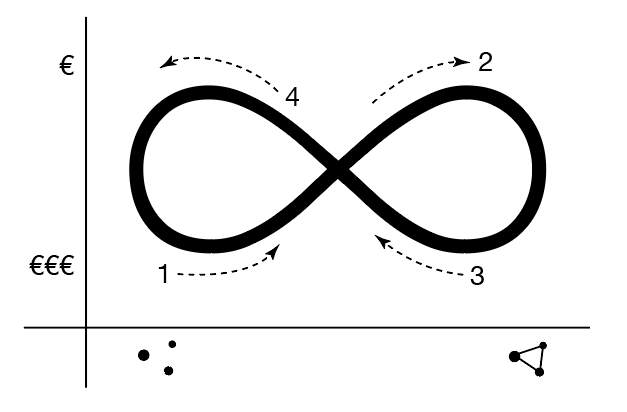
In order to be able to function in this way, it is important to have the mechanisms that:
- Make you aware of the dynamical interactions you are involved in;
- Provide you with a sense of agency within;
- Offer the tools to adapt or to influence this dynamics;
- Promote ecology within interactions;
In ∞OS we practice this on the level of the body and various experiments with space and with other bodies. This is the fastest and the most efficient way to inscribe the new behavioral patterns we learn on the level of our subconscious reflexes.
However, in the real world we also use other mediums, modalities, and interfaces to interact. So it is important to have a direct experience of how ∞OS principles can be translated into other modes of interactive exchange, not only using the body.
Cross-contextual confluence is a method of interaction that helps towards a more ecological exchange with one’s environment and stimulates creative capacities and learning approaches that span between different contexts.
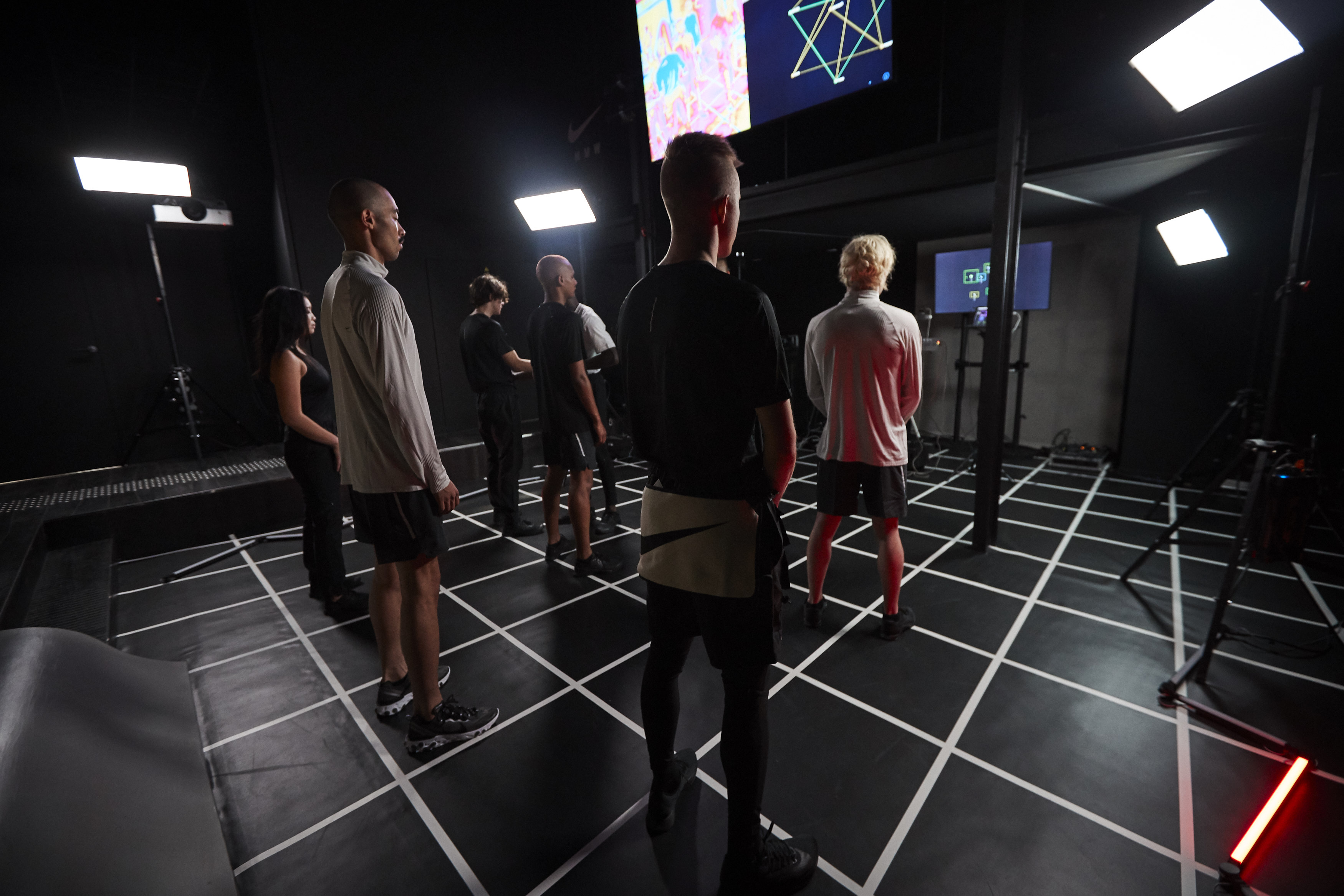
Step 1: Context Activation
To establish the notion of cross-contextual confluence we first need to identify the contexts we are dealing with.
In our case this was the space, the body, the sound, the vision, the text (workshop instructions), the narrative, the clothes, the inner state, etc.
In each of those contexts we identify the main tension points, which may indicate the points of pressure or expression, making the context what it is.
For example, if we’re talking about the body, we scan the body in order to observe what is happening inside and how it is changing (following Vipassana meditation techniques or some approaches used in Yoga).
 If we’re talking about the space we take a certain position in space as a group, creating temporary centers and attractors.
If we’re talking about the space we take a certain position in space as a group, creating temporary centers and attractors.
In the musical realm we establish a basic ambient / rhythmical pattern, which will serve as a background for activity.
Using the language we identify the main concepts that we will operating.
Once these tension points are established, we proceed to create a harmozing flow through each system using oscillatory wave-like dynamics. This helps release excessive tension (if there is any) from the system and to align all the elements into the kind of dynamic structure, which supports sustainable evolutionary development.
For example, in the context of the body [in space] we achieve this using a combination of breathing techniques and movement exercises inspired from Noguchi Taiso, Systema martial art, various dance and improvisational practice.
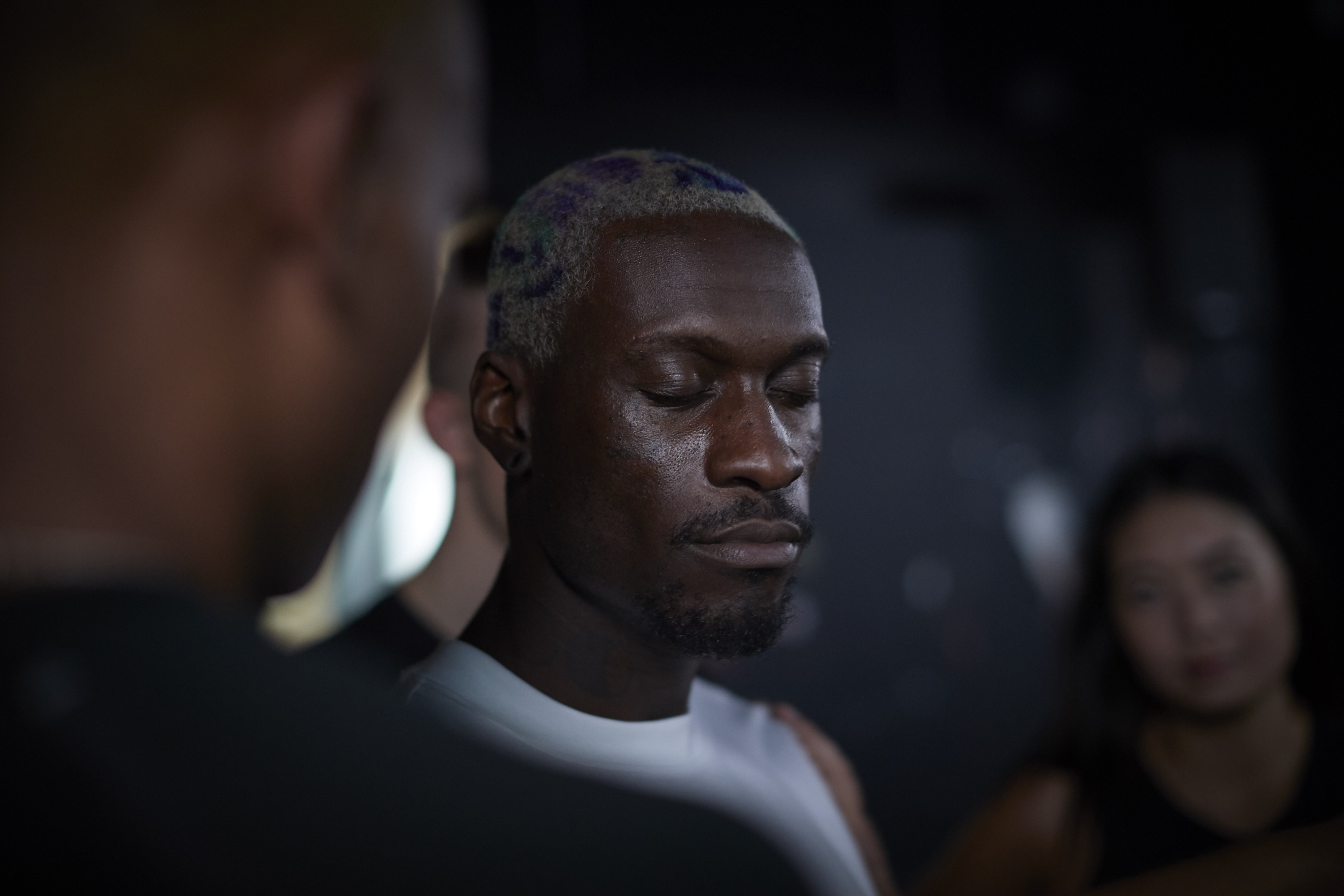
Step 2: Nonequilibrium Dynamics of the Flow
Once the specific contexts have been established, activated and explored, we move on to explore the specific principles of movement, which can be used when interacting with others and with the environment.
∞OS approach is based on the cultivation of fluid dynamics. The basic notion we start from is that of a ~ wave. We initiate this notion on the experiential level using a series of warm-up exercises on the level of the body as well as conceptually using the instructions and sonically / visually using the music, the sound, the light, and the projections.
Once the flow is established, we start to observe how it behaves when it’s put into relation to the environment. How would the body respond if it was liquid? How would we deal with stress psychologically if we see the stressful situation as a dynamic flow of tension? What are the strategies we can use to modulate the energy flow, to assimilate, infiltrate, control, redirect and generate various impulses in our environment?
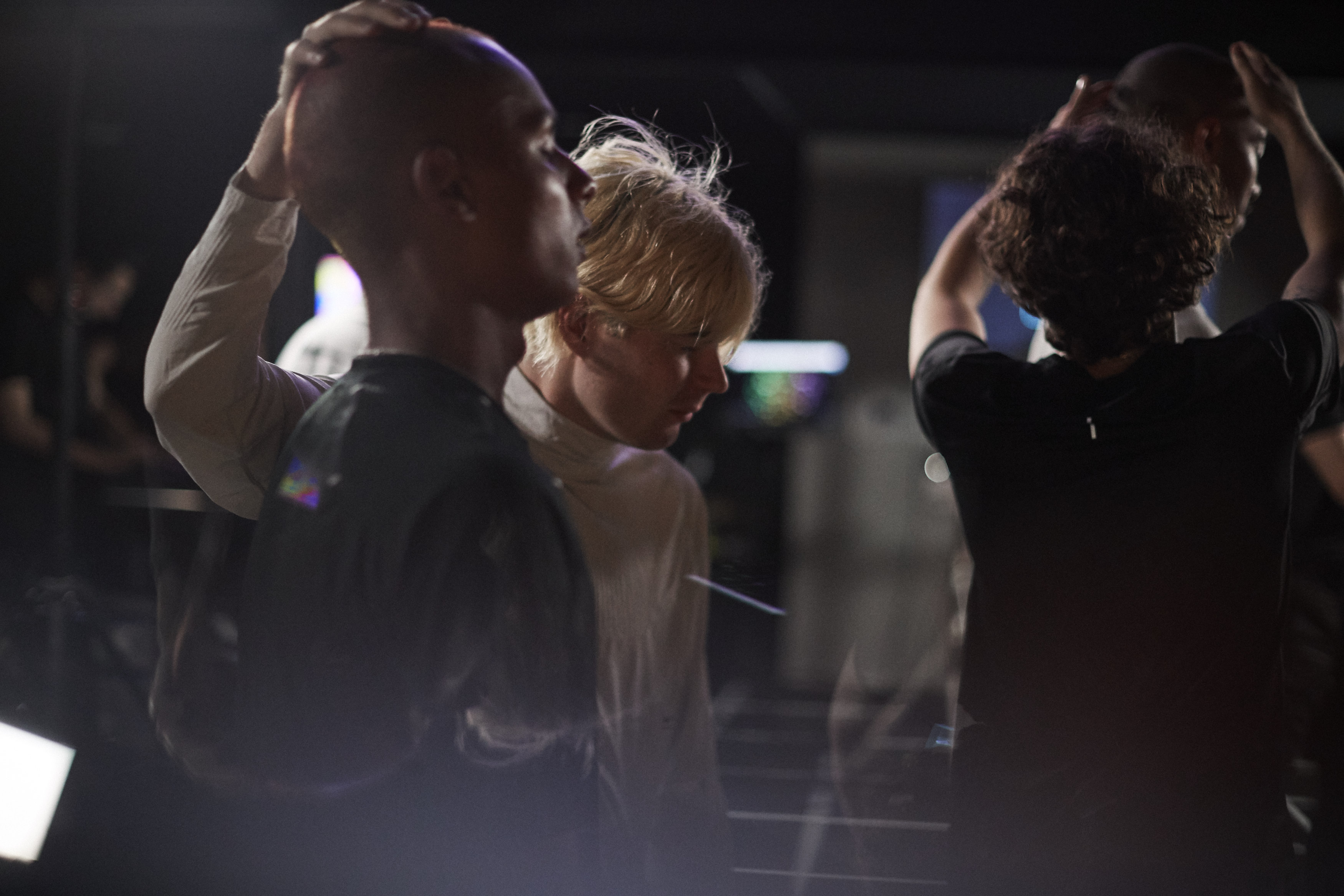
In one of the exercises we ask the participants to split into two groups: the leaders and the followers. The followers close their eyes and open themselves to external impulses. The leaders gently lead the followers with a soft impulse towards the head. The task of the leaders is to play with fluidity, softness and tension — observing how those different modalities affect the followers. The followers follow the impulses, while exploring the same notions from their perspective: their effect as well as the changes that are produced as a result of switching between the different modes, building up resistance, letting go, etc.
In this exercise we explore the notion of ∞-cycle (growth / conservation / release / reorganization) in an interactive situation with the other bodies. It is important to note that we are practicing non-equilibrium stability — that is, how a seemingly unstable, constantly changing formation can over time build up a certain pattern, which evolves in time through iterations of differences and repetitions, following evolutionary creative flow.

Physical exercises help the participants to experience the flow dynamics on the level of the body, so that the new patterns of behavior become available on the level of reflexes.
We propose the exercises using agile approach: through iterations and frequent feedback (between the participants and for the whole group), so that everyone can adjust their behavior depending on their interests and objectives.

Step 3: Confluence and Ecology of Interaction
After the participants are aware of all the contexts and have fluid dynamics activated both on the level of their physical and of their social body, we move on to the notion of confluence.
In the context of ∞OS practice confluence is understood as the merging of two or more fluid entities. When liquids merge they may assimilate, infiltrate, disrupt, dissipate, redirect each other’s flow. A fluid substance will not try to move the obstacle, it’s going to move around it. When there is a build-up of stress in a fluid / gas substance it usually increases the pressure, which may also have an impact on the environment.

Through a series of interactive exercises we study those qualities and play around with them in order to understand their ecological impact. When we talk of ecology in the context of ∞OS we mean an interconnected system, which is sensitive to various adjustments in underlying dynamics. We study the effects of our actions on each other and on the environment in order to have a better awareness of our behavior and its impact. We then choose the behavioral patterns, which follow the ∞-cycle, playing with the buildup / conservation / release / redistribution of energy.
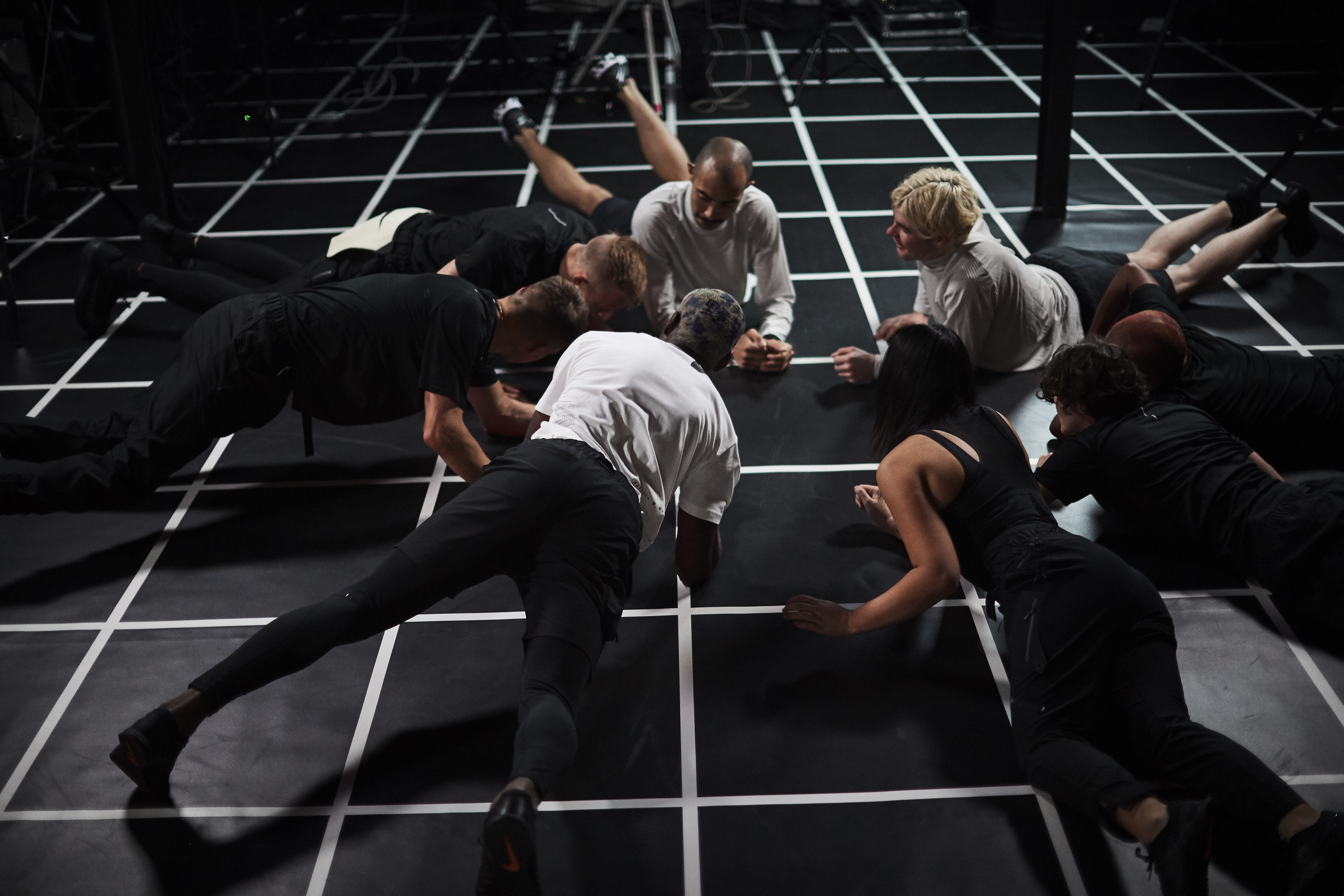
An example is the exercise above where we put the bodies in a physically strenuous situation and as soon as the tension builds up (growth) we then redistribute it in the other parts of the body, enabling us to stay longer in this challenging situation. We then start to play around giving each other impulses and working with those impulses. The idea is to use the impulse of the partner in order to use their own energy to destabilize their body. This is possible when we imagine that any incoming impulse is like an influx of energy and we sort of “catch” that wave into our wave (like a stream that falls into another stream) and use this cumulative energy of the encounter to redirect the impulse further.
The notion of confluence helps us better understand how to establish efficient communication between different parts and entities. It also prepares us for the next step: interaction between the different contexts.

Step 4: Cross-Contextual Confluence
In the previous stages of the training we worked on activating self-awareness and fluidity in the body and in one’s interactions with environment. We also developed and physically explored the concept of confluence — how to perform fluidity in the context of intersubjective relations and when dealing with the environment.
The next step is to see how we can use confluence on a more abstract level: using it as a strategy to connect different contexts together.
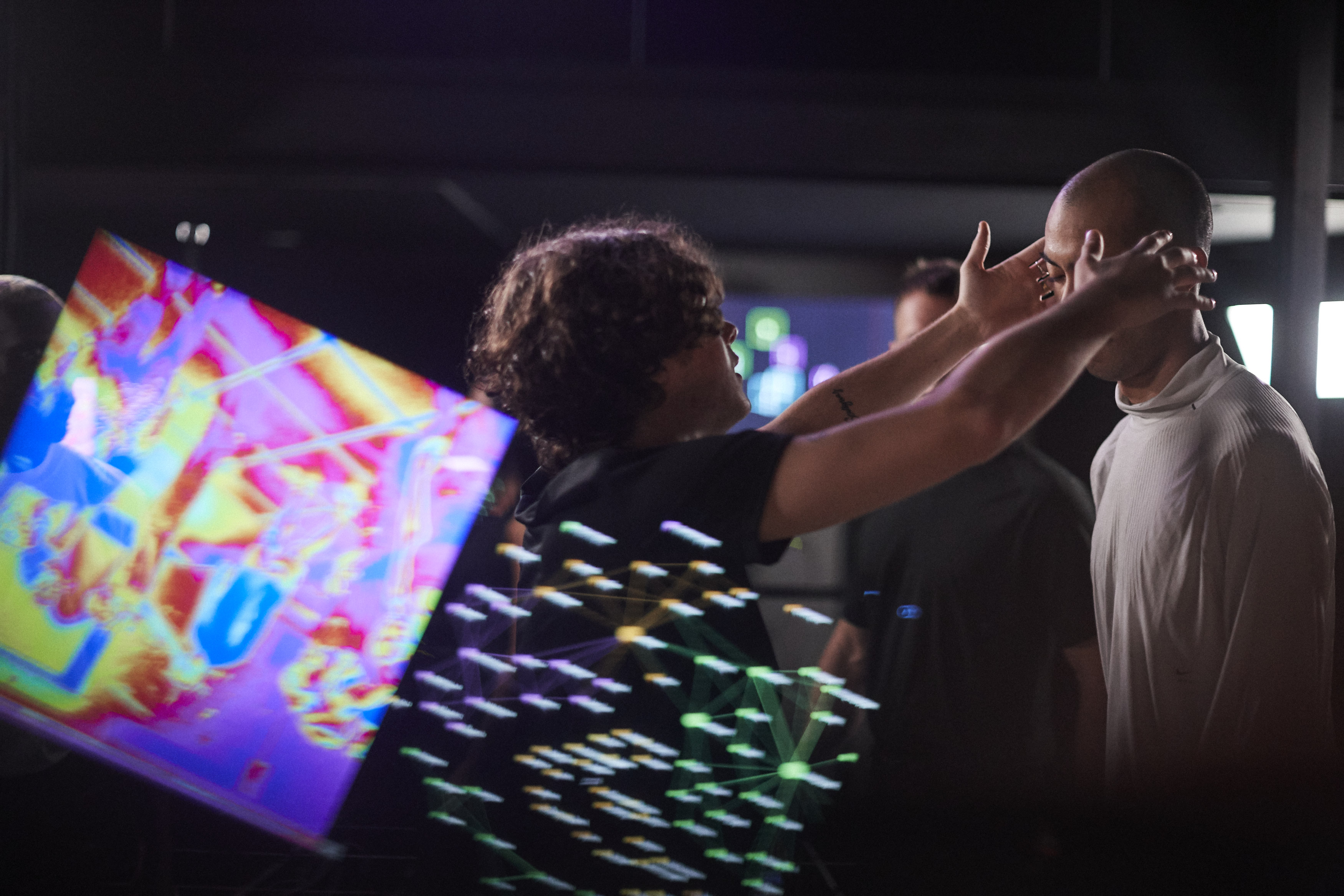
The benefit of linking different realms of knowledge cannot be underestimated: cross-disciplinary activity is important for any innovative and creative work. The ability to take knowledge from one context to another is something that separates humans from machines and is especially relevant in the age of AI taking over mechanical and specialized jobs.
∞OS practice develops the notion of confluence on the physical level and proposes to use that same approach to merge different contexts together. In order to activate this modality of perception we use a combination of different tools and stimuli. All the instructions are visualized as a network using InfraNodus tool, so that the participants have direct visual feedback on the discourse.
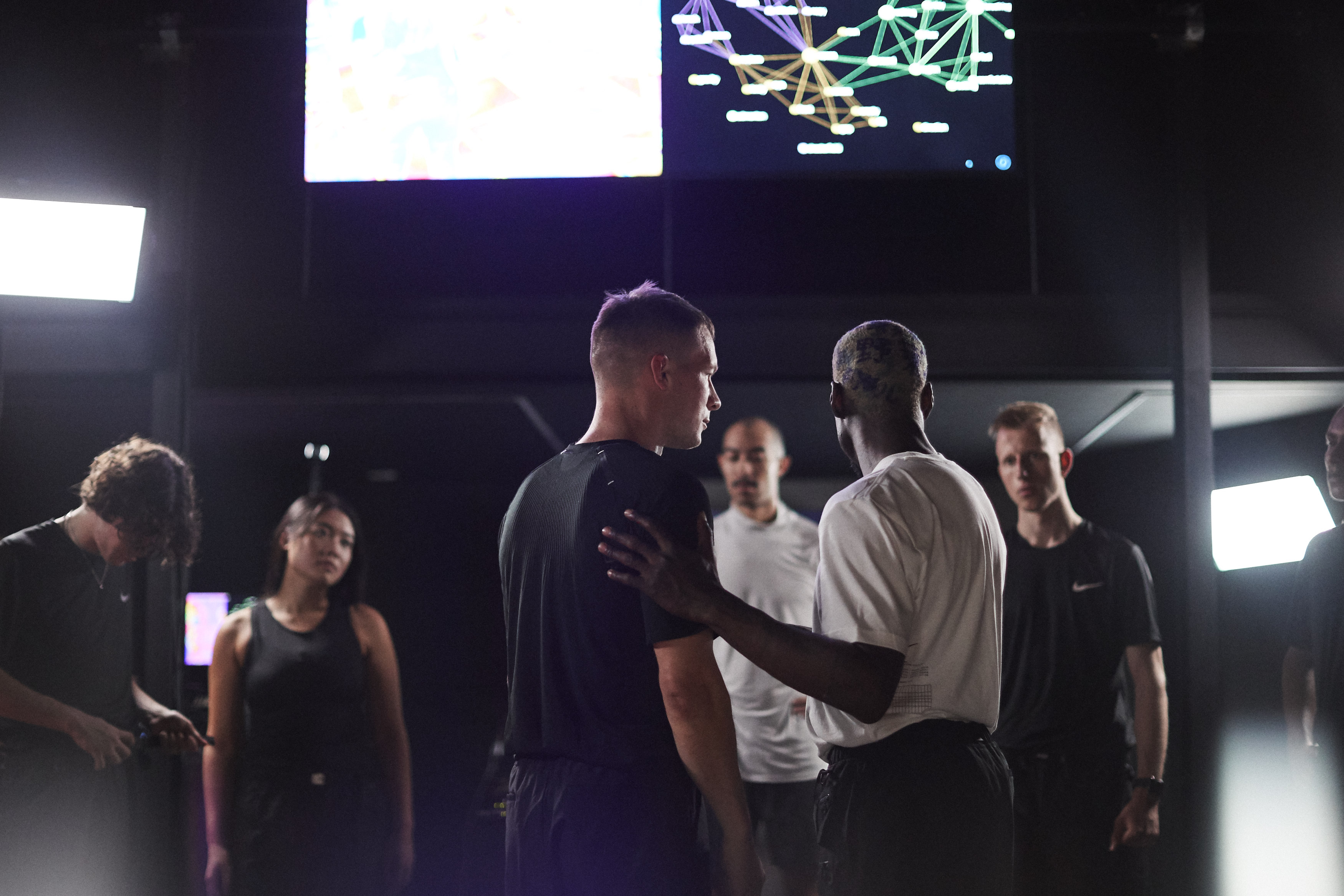
This visualization does not only emphasize the most important clusters of meaning, it also indicates the structural gaps, which should be address to further develop the discourse. Every time an instruction is given, it’s visualized as a subgraph and it also sends a MIDI signal to the music equipment, which changes its behavior and produces a new sound based on this translation. The music then influences the visuals — the light and the videos in the space. Together all these modalities have an influence on the participants’ movement and behavior, which, in turn, influences the instruction.
This way we build live bio-feedback systems, which spans across various contexts, the mental, the visual, the sonic, the somatic planes. This stimulates the participants’ imagination and helps them freely navigate between different points of view, increasing the level of awareness and free improvisational flow.
…
We thank for the opportunity Nike Lab Paris, Matthew Williams and Maqs Productions. Photos courtesy of Nike.





